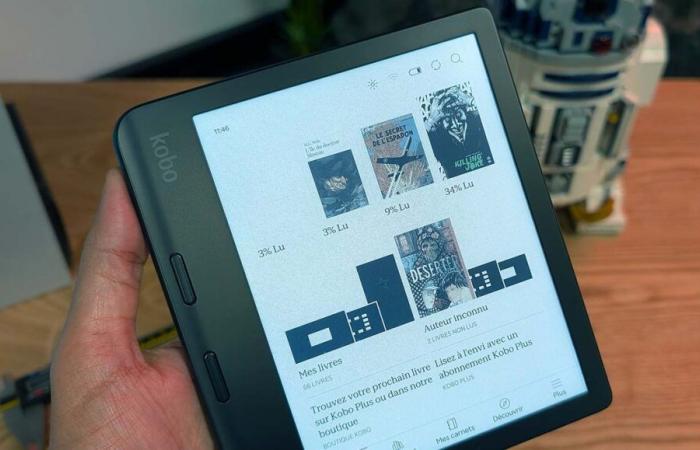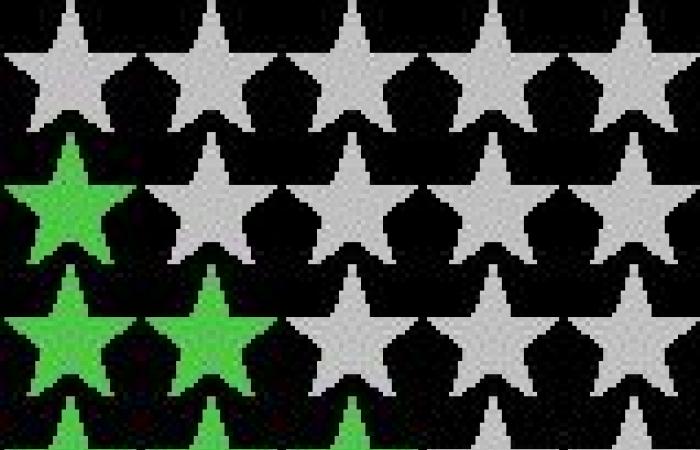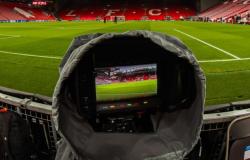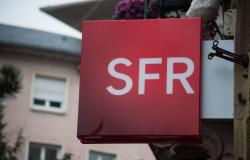Construction
The Kobo Libra Color takes the lines of its predecessor, the Libra 2, with a few subtle adjustments. Above all, she enjoys a nice weight loss since she weighs only 199.5 g, or around fifteen grams less on the scale.
Its compact 7-inch format and textured plastic case also make it very easy to handle with one hand, while the asymmetrical edges allow comfortable reading in portrait or landscape mode. It is therefore entirely possible to read for long hours without feeling wrist fatigue.
The e-reader is quite thin with a thickness of 8.3 mm.
© Les Numériques
The physical page turn buttons, located on the side of the device, are still present. They can be used equally by left-handers or right-handers since the gyroscope integrated into the handle is responsible for automatically orienting the text in the right direction. The touch screen completes these controls, providing fairly fluid and intuitive navigation in the interface.
The page change buttons are easily accessible for both right-handed and left-handed users.
© Les Numériques
A significant advantage of this e-reader is the IPX8 certification which allows it to withstand immersion in water for up to 60 minutes at a depth of 2 m. This feature will reassure those who like to read by the pool or in their bathtub.
The textured back improves grip.
© Les Numériques
In terms of autonomy, the Libra Color does not disappoint. Like the previous models in the range, it is capable of lasting several weeks on a single charge – Kobo announces 40 days of autonomy. Obviously, this endurance can vary significantly depending on the usual screen brightness. However, even by overusing the backlighting a little, it will be able to withstand at least two weeks of use without requiring a recharge.
Charging is done via a USB-C port.
© Les Numériques

Screen
The big new feature of the Kobo Libra Color is of course the integration of the color display. We might as well warn you right away: don't expect a colorimetric rendering that comes remotely close to tablet or smartphone screens. Its 7-inch screen displays a definition of 1264 x 1680 pixels in black and white (16 levels of gray), or a resolution of approximately 300 pixels per inch (ppi). This resolution nevertheless drops to 150 pixels per inch (632 x 840 pixels) when the screen displays colors (4096 shades available).
The measurements in our laboratory are unsurprisingly poor, at least for color content. In black and white, the Libra Color is in line with the brand's previous models with very good contrast. It therefore excels in its primary function: reading ebooks. The text is then clear and well contrasted, offering reading comfort comparable to that of paper. The ability to customize text size, font and spacing allows everyone to adapt the display to their preferences.
The addition of color is welcome, but not essential for this screen size.
© Les Numériques
On the other hand, as soon as color is involved, the contrast measurement reveals a starving score of 13:1, compared to 1200 on average for the best smartphone LCD screens. That said, it is worth noting that the W3C (the organization that promotes the compatibility of web technologies) recommends contrasts between 3:1 and 4.5:1 depending on the size of the text. Concretely, this means that black and white text is perfectly readable on this Libra Color.
It's not better in terms of colorimetric differences with a cataclysmic delta E at 18.7! Only the color temperature stands out with a score of 6128 K. Remember that the color temperature concerns the overall balance of hues, while the delta E evaluates the precision of reproduction of each color individually. A good screen should ideally have a temperature close to 6500 K and an average delta E of less than 3 for faithful color rendering.
In use, it is certainly not famous, but not as dramatic as these measurements suggest. Above all, it is the lack of contrast that will stand out for color content, with the latter appearing washed out. However, as imperfect as it is, this addition still remains progress compared to e-readers only in black and white.
Without being perfect, the color temperature curve appears more presentable than the delta E.
© Les Numériques
Kobo also offers many options to personalize the reading experience, including the ComfortLight PRO lighting system which automatically adjusts brightness and color temperature based on the time of day. You can also do it manually and this promises to reduce eye fatigue during nighttime readings… while further destroying the colorimetric rendering.
Let's finish this overview of the screen by evaluating the display finesse. If 300 ppi guarantees clear and pleasant reading, it's a different story at 150 ppi, especially since color content tends to be comics or comics, or formats that only flourish on really larger screens. The combination of these two factors therefore leads us to say that the gradual arrival of color on e-readers is not yet an unstoppable argument. This function can however be of interest in certain cases, for example for illustrated works, book covers or dashboards in certain ebooks, but for a reader of classic novels or manga, the contribution is relatively minor.
Here, the bubbles on the pages of Blake and Mortimer (a particularly talkative comic strip) are barely readable.
© Les Numériques

User experience
Formats
The Kobo store offers a vast catalog of e-books, accessible directly from the e-reader via a wifi connection. Libra Color is compatible with many file formats, including EPUB, PDF, MOBI and CBZ for comics. Only the proprietary AZW format is missing. This is not surprising as it is unique to Amazon Kindles.
The e-reader also supports audiobooks via Bluetooth connection. This functionality expands the possibilities of use, even if the dedicated catalog remains limited for the moment on the Kobo platform. In addition, it is still regrettable that the brand does not allow the user to load their own audiobooks in MP3 format. This is all the more surprising since, as we saw a little above, the manufacturer is very open in terms of formats for classic books.
The wealth of formats accepted by this e-reader is particularly appreciable. This makes the pill of no MP3 support for audiobooks that much harder to swallow.
© Les Numériques
Tools
The Kobo e-reader interface hasn't changed for a few years now, but that's not necessarily a bad thing as it remains perfectly functional. The Canadian manufacturer is not the most verbose there is when it comes to additional features (hello Vivlio), but it does offer some nice little extras.
From the More tab, you can synchronize your Pocket, Google Drive and/or Dropbox accounts. The first mentioned allows you to save articles locally on the Internet, then read them quietly locally in a sort of reading mode which adapts the layout to the e-reader. As for cloud accounts, they offer the possibility of retrieving content without having to plug the Kobo Libra Color into a computer. This is very convenient if you use one of the three services mentioned above, as you can renew your library from anywhere as long as you are connected to the Internet. Still, this is sure to frustrate users of OneDrive, pCloud, Proton Drive, etc.
Access to remote storage is very practical. Too bad only Google Drive and Dropbox are there.
© Les Numériques
Note-taking is more anecdotal. The e-reader is compatible with the Kobo stylus (optional), but the function is reduced to its simplest expression. It is also so limited that it gives the impression of having been integrated “to make up the numbers”. The stylus support, however, allows you to annotate the pages while reading. A very interesting and relevant possibility.
Kobo also offers reading statistics, as well as small rewards in the form of badges to unlock based on the number of hours read, minutes per session, pages per minute, etc. Fans of the genre will appreciate it.
Finally, there is also a Beta Features submenu which mainly contains a web browser. Yes, it is as slow as it is limited, but it still helped us out sometimes.
The web browser is still limited, but it can provide some services and takes full advantage of the arrival of color.
© Les Numériques







